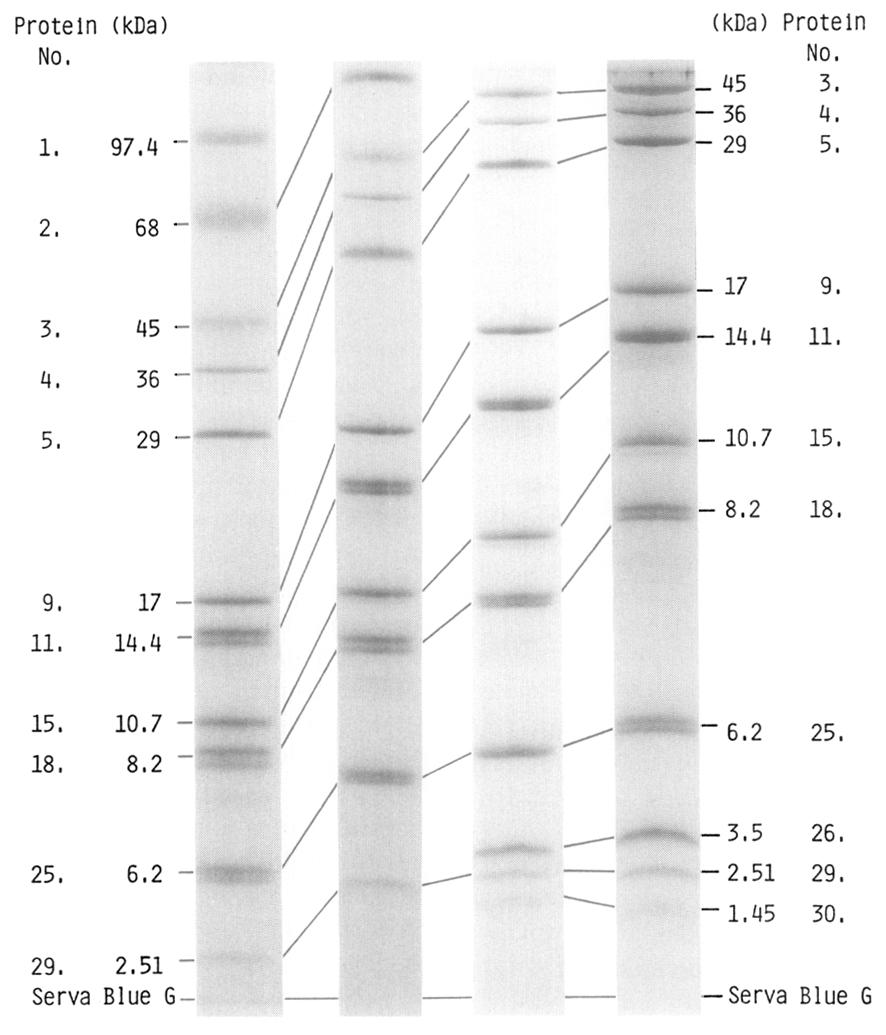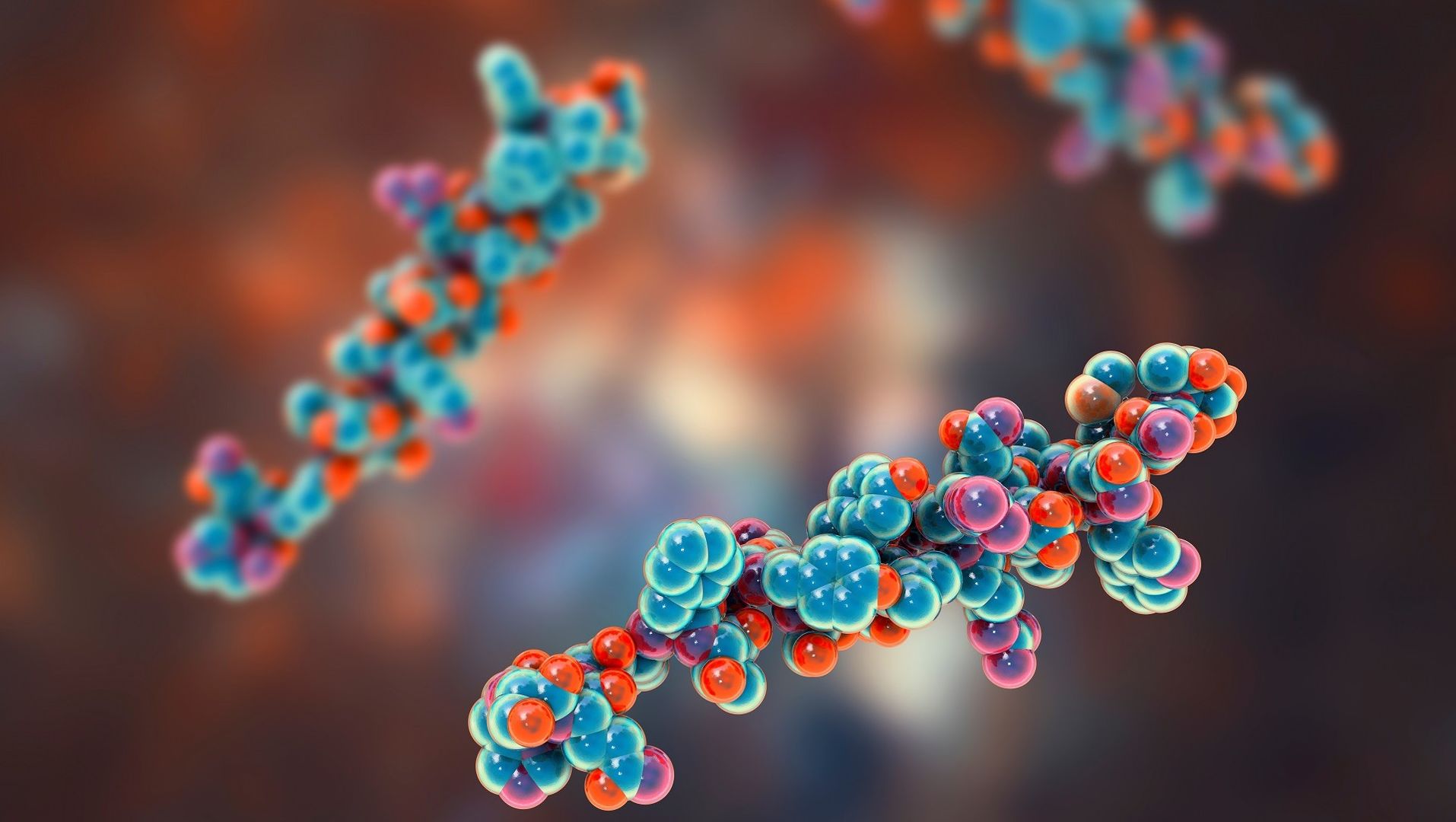At Creative Proteomics, SDS-PAGE is one of the most common methods used to separate and analyze peptides, which is achieved by using gels of different formulations and electrophoresis solutions containing glycine. Tricine SDS-PAGE is a more suitable tool for peptide analysis, making it easier to analyze and characterize small molecular weight peptides.
What is Tricine SDS-PAGE?
Tris-Tricine SDS-PAGE (polyacrylamide gel electrophoresis) was used to separate proteins/peptides in the molecular weight (MW) range of 1-100 kDa (Figure 1). This method replaces Glycine pK (9.6) with Tricine (pK 8.15). Due to the change in pK, it is more conducive to the separation of peptides.
 Figure 1. Separation Effect of Proteins/Peptides on Four Gel Types (Schägger, H.; Jagow, G.V. 1987)
Figure 1. Separation Effect of Proteins/Peptides on Four Gel Types (Schägger, H.; Jagow, G.V. 1987)
How to Use Tricine SDS-PAGE to Analyze the Purity of Peptides?
 Figure 2. Tricine SDS-PAGE Service Process at Creative Proteomics
Figure 2. Tricine SDS-PAGE Service Process at Creative Proteomics
Polyacrylamide Gel Selection and Preparation
Depending on your sample properties and MW range, we will configure the gel that is best suited to your needs.
Referring to the first lane in Figure 1, we will consider preparing and using a 10% acrylamide solution.
Referring to the second and third lanes in Figure 1, we will consider preparing and using a 16.5% acrylamide solution, and properly optimize the proportion of cross-linking agents. The concentration of cross-linking agents in lanes 2 and 3 is 3% and 6%, respectively.
Referring to the second and third lanes in Figure 1, we will consider preparing and using a 16.5% acrylamide solution and adding 6 M urea.
We can customize gradient gels, which contain a continuous gradient of acrylamide through the gel, for samples whose resolution is not high enough. Peptide resolution can be optimized by adjusting the concentration of acrylamide between 3-30%.
Sample Preparation
Add gel loading buffer to the sample and heat at 40°C for 30 min or 90°C for 5 min to denature the sample
Sample Loading
Prepared samples were loaded into each well. To avoid excessive sample loading, we controlled the amount of peptide per well to 0.5-2 µg.
Electrophoresis
First run the Tricine Gel at low voltage (30 V) for an initial 1 hour, then increase the voltage to 180 V. The device is awakened in a cold room throughout the procedure, and a pre-chilled buffer is used to keep the gel cold.
Visualization and Analysis
We will use professional equipment to develop the gel, and then use analysis software to analyze the purity of the target bands in the sample according to the number and thickness of the bands.
Advantages of Our Peptide Purity Identification Based on SDS-PAGE
- Simple and cost-effective technique:SDS-PAGE is an accessible, relatively inexpensive, and straightforward method for assessing peptide purity.
- Wide application:SDS-PAGE peptide purity testing is applicable to most synthetic and enzymatic peptides from 5 up to 50 amino acids long.
- Compatible with small samples: Requires only microgram amounts of peptide sample for analysis.
- Rapid: SDS-PAGE purity checks can be performed in ~ 1 hour.
- Preparative tool: SDS-PAGE can be used to separate impure peptide samples and isolate the band of interest.
- Orthogonal to LC/MS: Serves as an independent purity check, complementary to LC/MS methods.
Creative Proteomics provides trustable peptide purity identification services based on tricine SDS-PAGE. Contact us and let us provide you with the best solution for peptide purity analysis using tricine SDS-PAGE!
Reference
- Schägger, H.; Jagow, G.V. Tricine-sodium dodecyl sulfate-polyacrylamide gel electrophoresis for the separation of proteins in the range from 1 to 100 kDa. Anal Biochem. 1987, 166(2):368-79.
* For research use only. Not for use in diagnostic procedures!
Our customer service representatives are available 24 hours a day, 7 days a week.


 Figure 1. Separation Effect of Proteins/Peptides on Four Gel Types (Schägger, H.; Jagow, G.V. 1987)
Figure 1. Separation Effect of Proteins/Peptides on Four Gel Types (Schägger, H.; Jagow, G.V. 1987) Figure 2. Tricine SDS-PAGE Service Process at Creative Proteomics
Figure 2. Tricine SDS-PAGE Service Process at Creative Proteomics